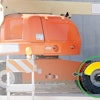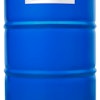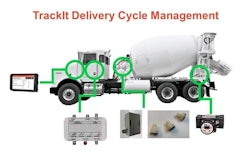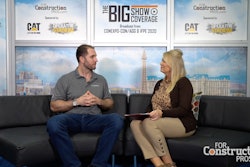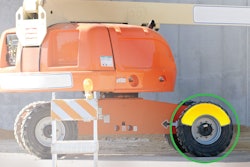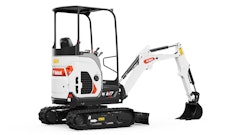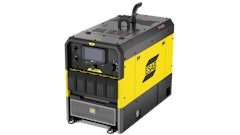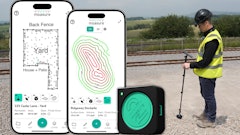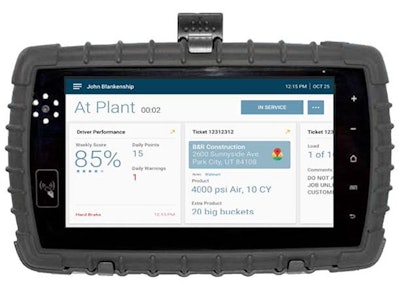
Every job is a source of useful information, but what is that information worth? Your bookkeeper can generate a job-costing report that shows whether any specific job made money. But does that report tell you whether or not your next job will be productive? The answer is usually no, and that can be a big problem.
How can you accurately bid, schedule and plan jobs without vital productivity and performance data? Job costing reports only on income and expense data, not the costs associated with all operational variables. If you don't have a way to understand those costs, how can you be able to control them?
What you need instead is an automated job tracking system that includes smart quoting, dispatching and billing functions. Because job tracking software measures and reports on all the quote-to-cash variables in real time, you have total visibility into job costs and progress daily; easy access and understanding of performance trends and averages; and complete digital control of freight and material quoting, truck scheduling and dispatch, sub-hauler management, automated dispatch delivery, billing, driver settlements, driver compliance and profitability reporting.
Job-tracking data is essential for creating realistic estimates, bids, schedules and budgets. Running trucks is a complicated business. Integrating a custom telematics solution enables you to make the most of all your assets.
Most soft costs are hidden costs until they get quantified. These costs can include safety, productivity, downtime and more. It is essential that these costs get identified and controlled in a trucking company.
5 Soft or Hidden Trucking Costs
There are five main soft or hidden costs that can be a challenge in a trucking operation:
- Excess idling is expensive; it wastes fuel and can shorten the life of the equipment. Drivers are happy to idle their trucks to keep warm in the winter or cool in the summer. To control excess idling, you can set alerts so that the driver and dispatcher are alerted when a driver has idled over a certain period.
- Controlling driver behavior is essential. Alerts and a driver scoring system can grade drivers on things like arriving later than the scheduled time, hard braking, hard accelerating, hard cornering, excess idling, taking longer than allowed at the load or delivery site, stopping between the load and delivery sites. Most of these behaviors waste fuel and decrease the safety of the fleet.
- Driver productivity can be challenging to gauge. It is done by bringing everything back to a dollar per hour that the driver is generating for the company - for tonnage or per load hauls. The drivers' loop times can be assessed in real time and compared with other drivers on the same job. Alerting the driver when they are in excess loading or unloading times will also increase their productivity.
- The beginning and end of the driver's day can be a high hidden cost. Drivers may arrive early, check in and then have a conversation in the shop. Or after their shift, they may linger in the driver's room before checking out. You can control the beginning and ending of their day by sending a schedule from dispatch to the truck. The device in the truck becomes the driver's timecard. Once the driver logs in, you can begin tracking them as they do their pre-trip and head out of the yard. At the end of the day, once the driver arrives back at the yard, you can allow a specific amount of time for their post-trip inspection and fueling and then you can auto-log them out.
- Helping drivers to be more productive helps them make more money. It is also important that drivers are paid accurately and on time. By tracking all this information electronically as it happens, the driver's settlements are correct and timely.
- Most of these problems are solved by using a good telematics system integrated into the dispatch and back office. Getting the scale tickets or bills of lading from the suppliers integrated into the system is fundamental, too. Having a fully integrated supply chain helps identify and control soft and hidden costs.
If a delivery of products and equipment needs to be re-routed or rescheduled, telematics systems have tracking capabilities, allowing them to find alternative routes. Many fleet management systems like these have live map technology that can reduce transit time and fuel usage by providing accurate, more optimal routing based on traffic, weather, road conditions, construction zones and restricted roads.
Construction equipment is costly and must follow a strict maintenance schedule. Telematics devices help contractors proactively maintain their vehicles by tracking mileage and engine hours. Fleet management software can be set up to monitor maintenance schedules with service reminders, which will reduce vehicle downtime and ensure job schedules can be met.
Some construction equipment is subject to government mandates. ELDs measure drivers' time and mileage to ensure truck drivers are staying within their Hours of Service (HoS) requirements. Relieve drivers from the burden of paperwork, allowing them more time in the field.
Fleet management solutions can digitally transform contractors by improving efficiencies within logistics and boosting the productivity of drivers, dispatchers and managers. Construction projects are better managed from beginning to end, providing a competitive advantage while improving bottom line profits.
Tom Burlington is in technical sales at Command Alkon (www.commandalkon.com).
